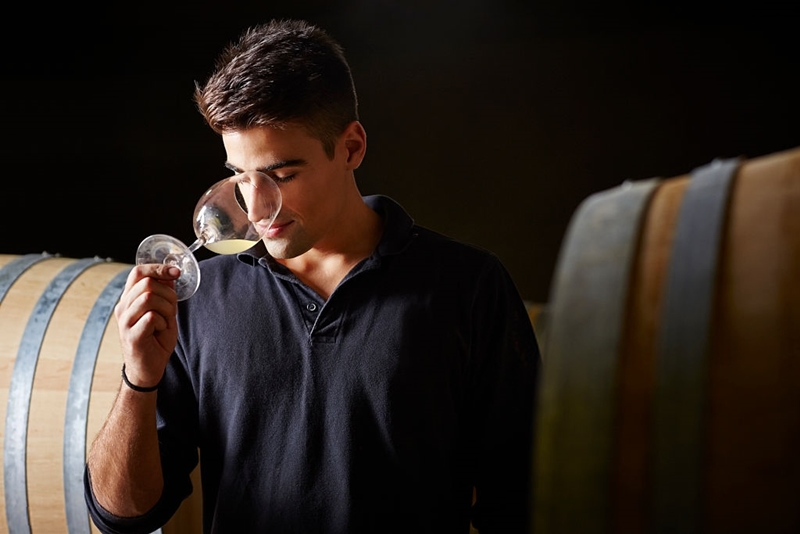From barrel to bottle: the role of wood in winemaking
The art and science of aging wine in wood: tradition meets modernity

Wine is a delicate creation, embodying the essence of the grape, the terroir, and the craftsmanship of the winemaker. One of the most significant and transformative stages in its creation is the aging process, and wood, predominantly oak, has been an integral medium for this transformation for centuries. But why wood? What does it bring to the wine, and how do modern techniques compare to the time-honored methods?
The Influence of Wood on Wine
Wood, as a natural material, is imbued with organic compounds. When wine is aged in wooden barrels, these compounds, over time, are transmitted to the wine. The result? A drink that is not just fermented grape juice, but one with enhanced flavors and an added depth of character.
After vinification, wine requires a period of maturation. This stage ensures the softening of any imbalances in the wine, especially moderating its acidity. The maturation process, when done in wooden barrels, infuses the wine with flavors from the wood, lending it a distinctive aromatic complexity.
Barriques: The Traditional French Barrels
The practice of aging wine in small wooden barrels, or 'barricas' – a term derived from the French 'barriques', originating from the Bordeaux region – is not new. French winemakers have long recognized the benefits of using these barrels. Their primary purpose is to provide subtle aeration, allowing the wine to reach its fullest potential.
As a result, wines, particularly reds, may acquire smoky and vanilla undertones. In contrast, whites may exude hints of toasted flavors, coconut, or even nuts.
Oak: The Wood of Choice
While there's a growing interest in exploring other types of woods for aging, oak remains the favorite among major global barrel manufacturers. Oak is preferred not just for its favorable influence on wine flavor but also for its optimal aeration capabilities.
Some wine producers, however, choose to age their wines in larger barrels or vats, ensuring the wood's flavor influence is subtle or almost imperceptible.
The Variables of Wooden Aging
Several factors determine the final flavor profile of wine aged in wood:
- The wood's origin: Different types of oak trees from various regions impart unique flavors.
- Drying process: The method in which the wood is dried can alter its influence on the wine.
- Porosity: The wood's porosity affects aeration levels.
- Charring level: The degree to which the inside of the barrel is toasted or charred can introduce varying flavor profiles.
It's worth noting that newer barrels tend to contribute more pronounced woody notes to the wine.
The Cost of Tradition
Aging wine in wooden barrels is a pricey affair. The cost is not just linked to the barrels themselves but also to the volume lost due to evaporation during the aging process. This inherent loss, coupled with the need for skilled labor to manage the aging, adds significant value to the final product. It's no surprise then that wines aged in barrels often command a higher market price.
Yet, in a bid to mimic the flavors imparted by wooden barrels, some producers introduce small wooden fragments or staves into stainless steel tanks during the aging process. This method, though economical, doesn't promote wine oxidation. Moreover, it's a technique not universally accepted across wine regulations.
Whether you're a connoisseur or a casual drinker, understanding the role of wood in wine aging offers a deeper appreciation for every sip. From the traditional French barriques to the modern shortcuts, the relationship between wine and wood is a testament to the artistry and innovation in winemaking.
Founded in 2007, Vinetur® is a registered trademark of VGSC S.L. with a long history in the wine industry.
VGSC, S.L. with VAT number B70255591 is a spanish company legally registered in the Commercial Register of the city of Santiago de Compostela, with registration number: Bulletin 181, Reference 356049 in Volume 13, Page 107, Section 6, Sheet 45028, Entry 2.
Email: [email protected]
Headquarters and offices located in Vilagarcia de Arousa, Spain.